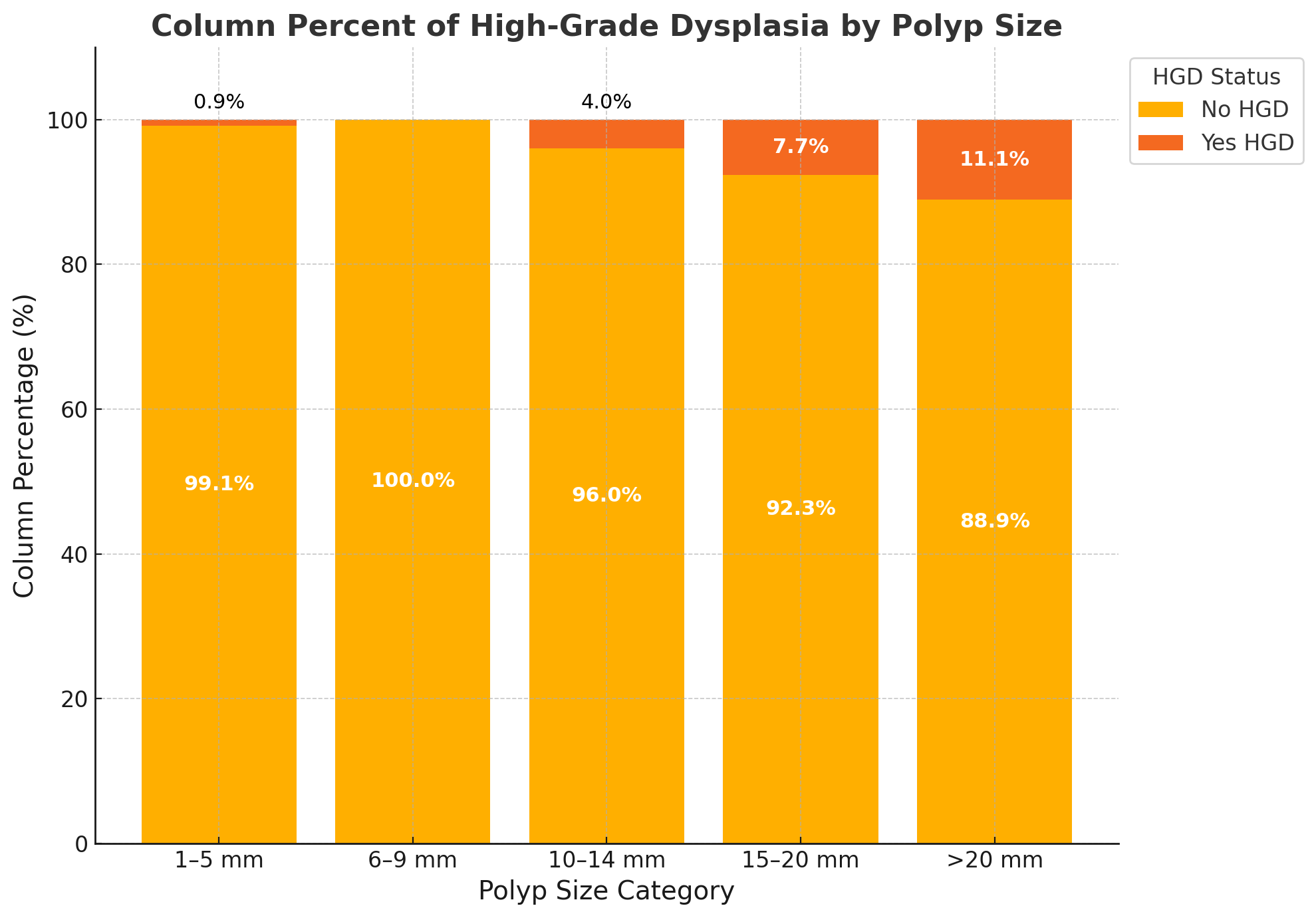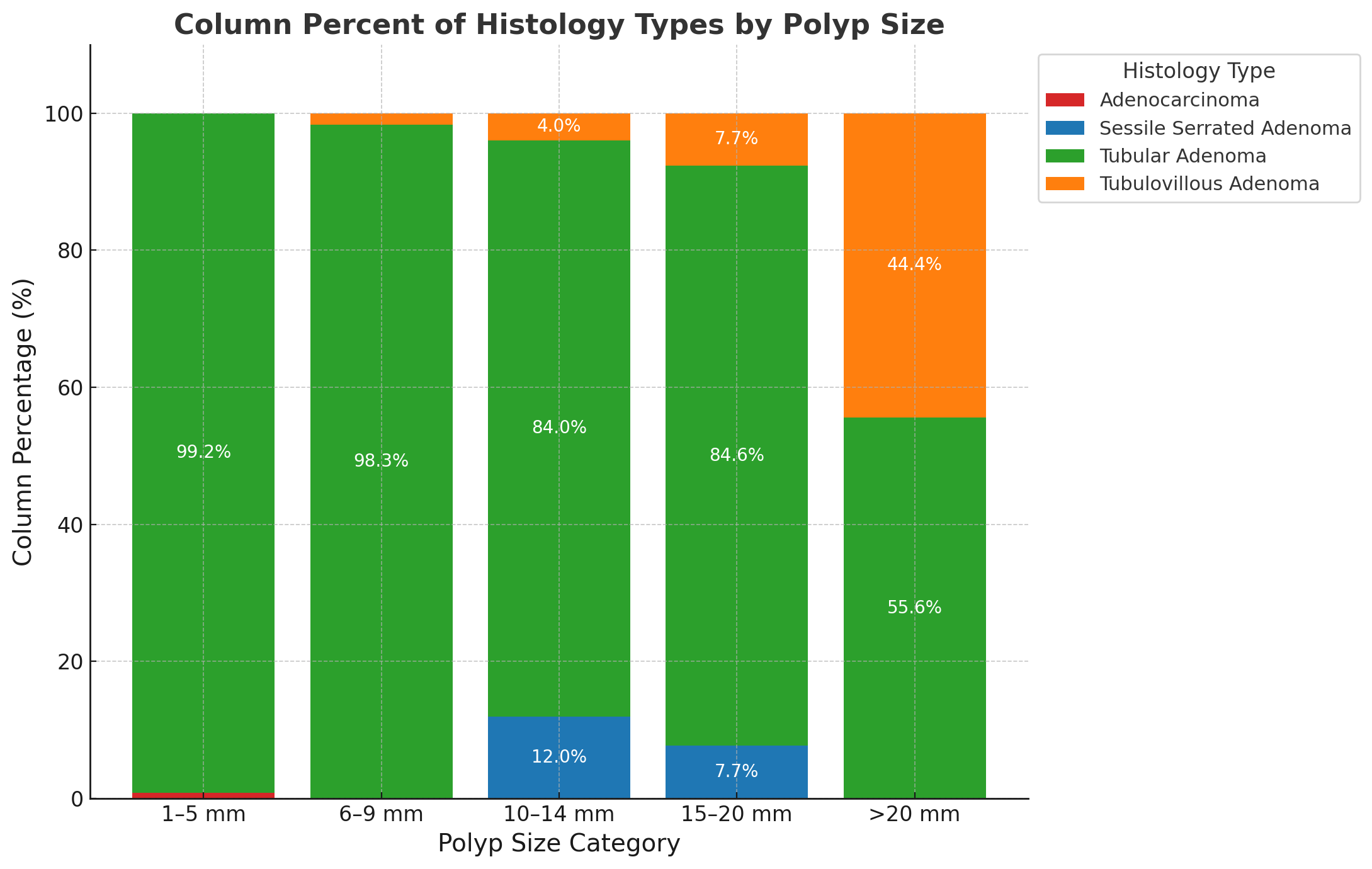Tuesday Poster Session
Category: Colon
P4591 - Prevalence of High-Grade Dysplasia and Invasive Cancer in Small Polyps Among Average-Risk Adults Undergoing Screening Colonoscopy

Hassam Ali, MD
East Carolina Gastroenterology
Greenville, NC
Presenting Author(s)
Award: ACG Presidential Poster Award
Hassam Ali, MD1, Jinye Liu, DO2, Rami Basmaci, MD2, Sarah Jahangir, MD2, Dushyant S. Dahiya, MD3, Rahul Pamarthy, MD2, Umar Hayat, MD4, Eslam Ali, MD2, Mohamad Khalaf, MD1, Douglas G. Adler, MD, FACG5
1East Carolina Gastroenterology, Greenville, NC; 2East Carolina University Medical Center, Greenville, NC; 3University of Kansas School of Medicine, Kansas City, KS; 4Geisinger Wyoming Valley Medical Center, Wilkes-Barre, PA; 5Center for Advanced Therapeutic (CATE), Centura Health, Porter Adventist Hospital, Peak Gastroenterology, Denver, CO
Introduction: The risk of advanced neoplasia in diminutive and small colorectal polyps remains controversial. Prior data suggest that high-grade dysplasia (HGD) and invasive cancer are exceedingly rare in subcentimeter lesions, with reported HGD prevalence around 0.4%. We aimed to assess the prevalence of HGD and invasive carcinoma across polyp size categories in a screening cohort of average-risk adults aged ≥45 years in United States undergoing their colonoscopy.
Methods:
We conducted a retrospective analysis of polyp-level histopathologic data from screening colonoscopies performed between 2019–2023. Eligible patients were average-risk individuals aged ≥45 years undergoing colonoscopy for colorectal cancer screening. All polyps were resected and categorized by size: 1–5 mm, 6–9 mm, 10–14 mm, 15–20 mm, and >20 mm. Chi-square test was used to assess any statistical differences.
Results:
A total of 222 polyps were identified from average-risk screening colonoscopies. Overall, 4 polyps (1.8%) contained HGD, including 1 of 117 polyps (0.85%) in the 1–5 mm group, 1 of 25 (4.0%) in the 10–14 mm group, 1 of 13 (7.7%) in the 15–20 mm group, and 1 of 9 (11.1%) in the >20 mm group (p = 0.05) (Figure 1). No HGD was found in the 6–9 mm size group. One invasive adenocarcinoma (0.45%) was detected in a 1–5 mm polyp; all other size categories had zero cases of cancer (p = 0.92). Tubular adenomas were the most common subtype, accounting for 210 of 222 polyps (94.6%), including 99.2% of 1–5 mm polyps and 98.3% of 6–9 mm polyps. Tubulovillous adenomas made up 44.4% of >20 mm polyps, compared to just 1.7% of 6–9 mm and 4.0% of 10–14 mm polyps. Sessile serrated adenomas were identified in 12.0% of 10–14 mm and 7.7% of 15–20 mm polyps, but were absent in polyps < 10 mm or >20 mm (Figure 2). HGD was more frequent in men (75%) and Black patients (50%) despite comprising 62.6% and 39.2% of the cohort, respectively. All HGD lesions were right-sided, located in the ascending colon (75%) or cecum (25%), suggesting possible demographic and anatomic variation.
Discussion:
In this average-risk screening cohort, high-grade dysplasia was detected in nearly 2% of polyps, including diminutive lesions, with one 5 mm polyp showing invasive cancer. These findings challenge assumptions of minimal risk in small polyps in the United States population.
Figure: FIgure 1. Prevalence of High-Grade Dysplasia by Polyp Size.
Figure: Figure 2. Distribution of Histology Subtypes by Polyp Size.
Disclosures:
Hassam Ali indicated no relevant financial relationships.
Jinye Liu indicated no relevant financial relationships.
Rami Basmaci indicated no relevant financial relationships.
Sarah Jahangir indicated no relevant financial relationships.
Dushyant Dahiya indicated no relevant financial relationships.
Rahul Pamarthy indicated no relevant financial relationships.
Umar Hayat indicated no relevant financial relationships.
Eslam Ali indicated no relevant financial relationships.
Mohamad Khalaf indicated no relevant financial relationships.
Douglas Adler: Boston Scientific – Consultant.
Hassam Ali, MD1, Jinye Liu, DO2, Rami Basmaci, MD2, Sarah Jahangir, MD2, Dushyant S. Dahiya, MD3, Rahul Pamarthy, MD2, Umar Hayat, MD4, Eslam Ali, MD2, Mohamad Khalaf, MD1, Douglas G. Adler, MD, FACG5. P4591 - Prevalence of High-Grade Dysplasia and Invasive Cancer in Small Polyps Among Average-Risk Adults Undergoing Screening Colonoscopy, ACG 2025 Annual Scientific Meeting Abstracts. Phoenix, AZ: American College of Gastroenterology.

